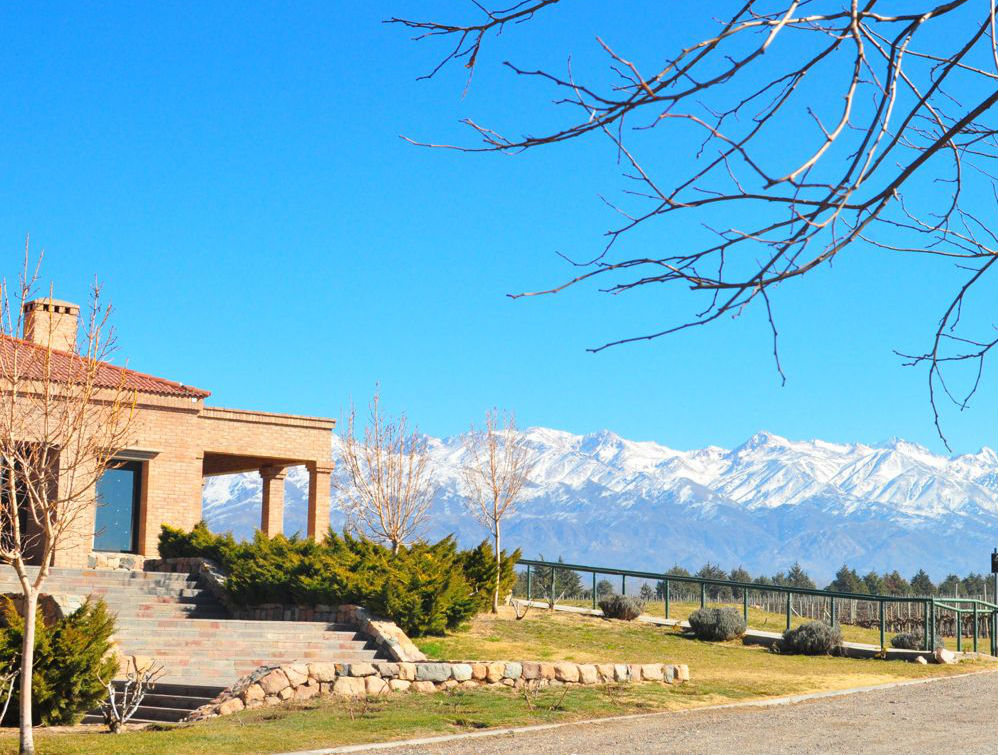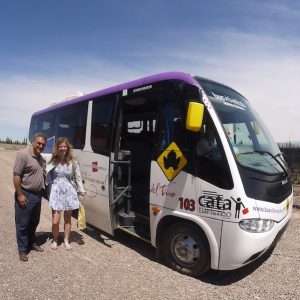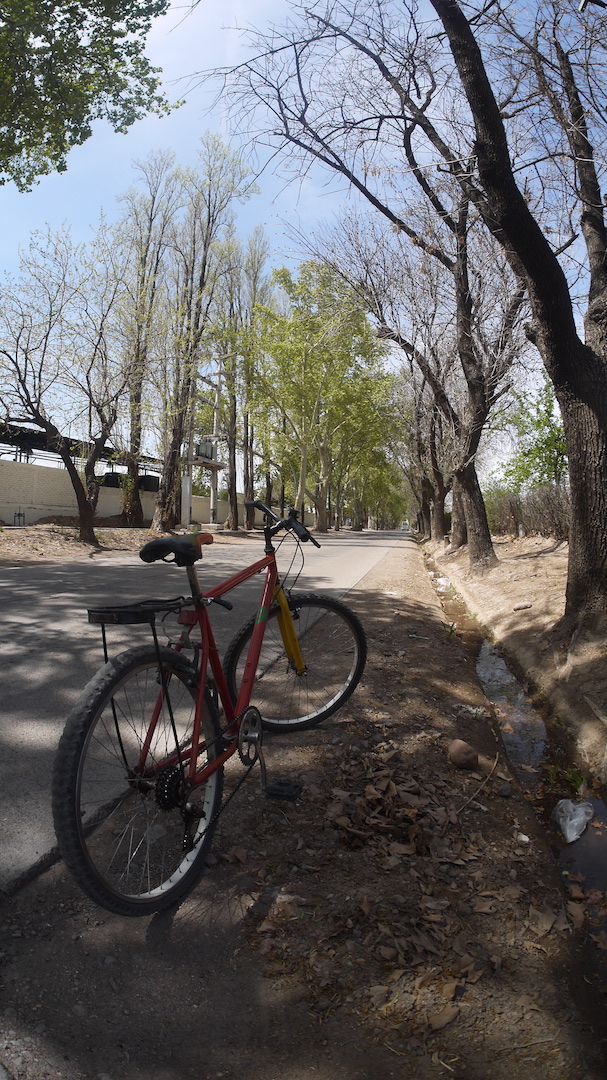If you are keen to head out to visit Mendoza’s wine regions, you’ll need to get the lowdown on how to get there and explore first. There are a few ways to get out and visit wineries from the city. If you choose to stay outside of Mendoza – in Lujan de Cuyo, Maipu or the Uco Valley – then chances are your hotel will be a walk or bike ride from the closest winery, but staying in Mendoza city you’ll need to either brave the bus, bike, car or take a taxi to get where you want to go. Here’s the inside scoop with all the ways to explore Mendoza’s beloved bodegas.
Visiting Mendoza’s wineries by bus
Public buses are by far the cheapest way to go, although their span is rather limited. You can access a few wineries by public bus which are within walking distance from others: try the 850 line from the bus terminal to Agrelo and stop off at sparkling wine house Chandon (Km 29 on Ruta 15, Agrelo) where you can do a tasting of their bubbly and eat a sparkling wine paired lunch in their pretty restaurant. Next door you can visit Dolium (Km 30 on Ruta 15) a smaller winery with underground architecture where you can try wines with the winemakers or the owner.
Or head to Mayor Drumond in Lujan on the same bus or the 1.19 bus where you can visit three wineries all within a stone’s throw of each other: the larger winery Luigi Bosca with its long history and good variety of wines (San Martin 2044); historic and quaint Lagarde with a handsome, old vineyard and a good restaurant (San Martin 1745); and the original garangista in Mendoza and a real gem of a character Carmelo Patti (San Martin 2614) who’ll take you through his small winery and show you his press clippings with adorable pride. You’ll probably spend around $70 USD on the bus, a decent lunch and two wine tastings.
Another bus option is the Bus Vitivinicola. With subsidies from the government and wineries involved, the bus costs $25 to $35 USD (depending on your route) and takes you door to door on a circular route between 5 or 6 wineries ensuring that you can get three visits in on the rather long day.
Recommended wineries on the route are: fabulous lunch at Terrazas de los Andes, learning about llamas and tank tastings at Tapiz, or a step back in history with Clos de Chacras. This works out at around $130 USD per person with the bus, a decent lunch and two wine tastings.
Visiting Mendoza’s wineries by bike
The classic backpackers tour of Mendoza’s wine scene is by peddling your way between wineries in Maipu. But be warned – although the ride is flat and easy, it is hot and the trucks and lorries swinging around you at supersonic speeds can be quite a hair-raising experience… At least until a few glasses of wine take the edge off.
Practically a rights of passage for budget travellers in Mendoza, getting on a bus to Maipu (take the 171, 172 or 173 from Catamarca and Rioja streets) is the first stage to the bike shop where on Urquiza street you’ll find a few different places touting their two wheelers (try Mr Hugo). Each bike company will give you a map, but peddling between bodegas is not that hard with plenty of signs and other merry cyclists leading the way. Stop by at Familia Di Tommaso for a spot of history, Carinae for some of the best wine en route, Tempus Alba for a nice lunch in the sunshine and try La Rural for the impressive wine museum. After a couple stops you’ll be quite merry on the experience and the tourist police have a tendency to follow foreigner’s bikes to make sure they manage to trundle their way back to safety later in the evening.
The whole experience will set you back around $60 USD with tastings and a bite to eat.
Visiting Mendoza’s wineries by car
If you are particularly fussy about which wineries you want to see, then having your own wheels is the way to go. However if you aren’t too worried about meeting your hit list of wineries, then stick to a chauffeured car or a wine tour – you’ll have much more fun. Navigating the roads and finding wineries isn’t as easy as it first seems and signage isn’t great in Mendoza.
If you are determined to get your own wheels though, you’ll want to pick a wine region to tour for the day. You can try to visit more than one wine region in the same day but distances are long and it makes much more sense to pick one region.
Picking a wine region to explore…
Visiting Luján de Cuyo
One of the biggest wine production regions in Argentina, Luján de Cuyo what locals call the ‘home of Malbec’. A large area that hosts a suburban sprawl as well as countless empty plains only populated by vines. You can reach Luján within about a 30 minute drive from the city but some wineries are almost an hour away. Recommendations include Pulenta Estate for its fun blind aroma guessing game and its fabulous Cabernet Franc; Ruca Malen for its top winery restaurant where you can tuck into five wine paired courses; and Catena Zapata as one of the biggest household names for Argentine wine (although book ahead as the scheduled tours book up quick). There are at least 30 wineries in Lujan that are worth your time, check out our other recommendations in our Luján de Cuyo winery guide.
Visiting Valle de Uco
The Uco Valley is the word on every wino’s lips not only for its supreme quality high altitude wines but also for the awesome scenery: jaw-dropping mountains frame the vast vineyards and infinite blue skies – it is any oenophile’s idea of heaven. The wineries are top notch too with some of the biggest investments and ergo the most impressive architecture. Reining high in the architecture race is dutch owned Salentein with its cathedral to wine, art gallery and sculpture garden, closely followed by avant-garde O Fournier that resembles a Star Trek creation and hosts a stellar restaurant. You’ll find excellent winery lunches at wineries including Andeluna, Diamandes and Zuccardi. Or you can try more humble, down to earth wineries like family-run Gimenez Riili or the small cube shaped winery La Azul. There are less wineries in the Uco Valley worth visiting than in Luján de Cuyo (around a dozen) but the spectacular valley is certainly worth the extra hour in the car. Read our guide to Uco Valley wineries online now.


